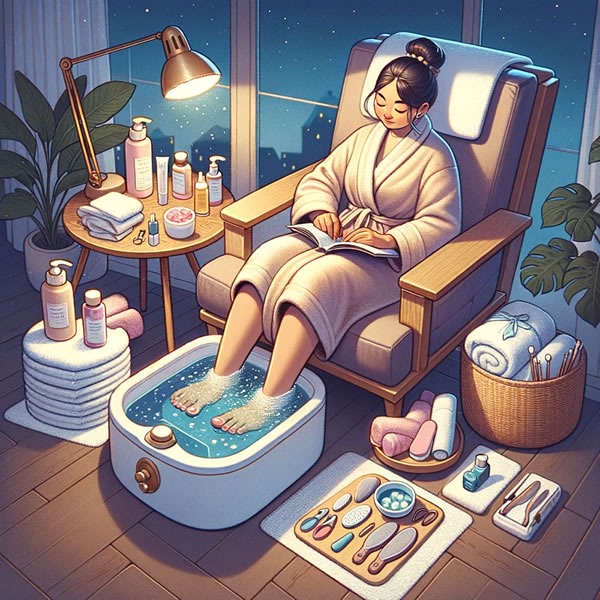Our hands and feet need professional care just like the rest of our body. Hand and foot care, which is important for both our health and aesthetic appearance, brings some health problems if not done correctly.

Home Care Methods
Home Hand Care
- Moisturize Regularly: Moisturize your hands with lotions or creams to prevent dryness, especially after washing.
- Sun Protection: Use sunscreen to protect your hands from harmful UV rays.
- Gentle Cleansing: Use mild soaps and avoid over-washing, which can strip the oils from your skin.
- Exfoliation: Use a gentle scrub once a week to remove dead skin cells.
- Nail Care: Keep your nails trimmed and clean. Use cuticle oil to keep your cuticles healthy.
- Protection: Wear gloves to protect your hands from harsh chemicals when cleaning or washing dishes.
Home Foot Care
- Daily Washing: Wash your feet daily with soap and water and dry them thoroughly, especially between the toes.
- Moisturizing: Use a good foot cream every day, especially after bathing, to prevent dry and cracked skin.
- Comfortable Shoes: Wear comfortable shoes that fit well to prevent corns, calluses and blisters.
- Exfoliation: Exfoliate your feet regularly to remove hard skin and calluses.
- Nail Care: Trim toenails straight to prevent ingrown toenails.
- Support: Use insoles or supports if needed for additional foot comfort.
Common Foot Problems and Typical Medical Treatments
Medical treatments for foot problems can vary greatly depending on the specific condition. Here is a list of common foot problems and their typical medical treatments:
Ingrown Nail
Ingrown nail can be explained as the nail sinking into the flesh due to various problems. If not intervened by a professional, the nail sinking into the flesh causes inflammation problems around it. This causes discomfort as well as intense pain. The ingrown nail is painlessly removed with the “wire system” procedure and the recurrence of ingrown nails at the same point is prevented.
- Choosing the wrong and small shoes,
- Incorrectly performed manicure and pedicure procedures,
- Diabetes
- Genetic structure,
- Nail fungus problems are the causes of ingrown nail problems.
Cracked Heel
Diabetes, insufficient water consumption, improperly dried or dehydrated heels can lead to cracks and dryness.
In severe cases, referral to a podiatrist or dermatologist may be necessary. These specialists can safely remove dead skin, prescribe stronger topical or oral medications and provide specialized heel wraps and supports.
Callus
It is a foot health problem that occurs with pressure and friction. A health professional can cut off the excess skin with a scalpel. This should never be done at home because of the risk of injury and infection.
Nail Fungus
Nail fungus, which occurs due to reasons such as common areas of use and improper shoe selection; It manifests itself with ejaculation in the nail, thickening of the nail structure and discoloration.
If the infection is severe or extremely painful, your doctor may recommend removal of the nail. A new nail usually grows back, but this can take up to a year. During this time, you will be treated with an antifungal cream to prevent re-infection.
Athlete’s Foot (Tinea Pedis)
This is treated with antifungal medicines, which can be topical (creams, powders, sprays) or oral.
Bunions
Treatment may include padding, appropriate footwear, special orthotics or surgery to correct the deformity.
Plantar Fasciitis
Treatment usually starts with rest, ice, over-the-counter painkillers, stretching exercises, orthotics and sometimes corticosteroid injections. In resistant cases, physical therapy or surgery may be considered.
Heel Spur
Treatments include exercise, custom-made orthotics, anti-inflammatory drugs and corticosteroid injections. Surgery may be an option if conservative measures fail.
Hammertoes
Treatment may include shoe modifications, orthotic devices, medication for pain and, in severe cases, surgery to straighten the toe.
Gout
It is treated with medications that lower uric acid levels in the blood, anti-inflammatory drugs and lifestyle changes such as dietary changes.
